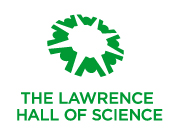In this activity from Lawrence Hall of Science, you’ll use hot and cold water to see how fluids at different temperatures move around in convection currents.
Be sure to share what you’ve learned about the sun and convection during Science Friday’s Science Club, using the hashtag #ExplainTheSun.
Safety:
Be careful not to spill the colored water you prepare. Be very careful with hot water to avoid burns.
Materials:
glass baking dish or clear plastic container, roughly 7 cm deep or more
blue food coloring
red food coloring
access to tap water
two drinking cups of equal size
handful of ice cubes
two spoons
strainer
mobile device with a camera
Procedure
- Pour tap water into the large container until it’s 2 cm from the top. Let the water come to room temperature.
- Fill one cup with ice, then add cold water up to the top of that cup. Place 10 drops of blue food coloring into the water and carefully mix with a spoon. Pour the blue water and ice through a strainer into the second cup to retain only the blue water.
- Fill the empty first cup again, but this time halfway, and with hot tap water. Place 10 drops of red food coloring into the cup of hot water and mix with a spoon. Tip: The cup of hot water is only filled halfway so that there is an equal volume of hot water in one cup and cold water in the other.
- Have a friend help you. At the same time, one of you should slowly and carefully pour the hot red water into one side of the large water-filled container, while the other slowly pours the ice-cold blue water into the opposite side.
- From the side of the container, watch the red and blue water to see how the colors move around in the larger container of water. Do both the red hot water and blue cold water move in the same way? Tip: Watch the water in the container for about 2 minutes. Use the camera on you mobile device to take images of the water every 10 seconds, so you can go back later and see how the colored water moved.
What's Going On?
You should have seen the hot red water stay towards the top of the container, while the cold blue water sank towards the bottom. Hot water is less dense than the surrounding water, so it tends to float up and stay towards the top. Cold water is denser, so it tends to sink down. As the hot water rises, it carries heat, which it transfers to the sinking cold water. This process of heat transfer, called convection, spreads heat within the container of water.
Convection in the Sun
This same convection process occurs in the sun as well. The sun’s core is hotter than its outer layers. Hot plasma rises from the core towards the surface, where it cools and sinks back towards the core. This process forms convection cells that we see as solar granules. The lighter color in the granules is the sun’s hot plasma that has risen to the surface. The dark areas are where the plasma has cooled and is falling back towards the core. These solar granules are usually about 1,000 km wide and can last less than an hour.
Explore more sun science
This activity is featured in DIY Sun Science, an iPhone/iPad app that allows you to investigate the Sun at home, at school, or anywhere you go! Download the free DIY Sun Science app at lawrencehallofscience.
Meet the Writer
About Lawrence Hall of Science
The Lawrence Hall of Science, UC Berkeley’s public science center, has been providing parents, kids, and educators with opportunities to engage with science since 1968. Learn more at www.lawrencehallofscience.org

